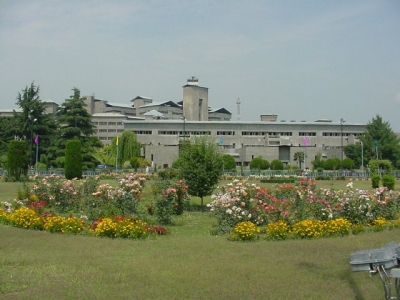Ahmad Riyaz
The assassination of Jamiat Ahle Hadees chief Maulana Showkat Shah has mystified a majority of the people in Valley who think there is hardly anything in the immediate Kashmir situation that explains the incident. More so, at a time when Valley appeared free of discord over a dialogue with centre or a possible solution proposal for the state.
For one, there were no ongoing talks with New Delhi. And for another, Kashmir was not in the midst of a fresh public groundswell against India as was the case in the past three years. This deprives the killing of Showkat of a political context in which it could be understood.
Even though, Shah had been attacked twice earlier, it was always in the midst of exceptional political turbulence. First in 2006 when his was car was fired upon by unidentified gunmen. In 2008 when Valley was in throes of its first public unrest over Amarnath land row, there was a grenade attack on the residence of Shah, then a Hurriyat Coordination Committee member charged with formulating protest programmes. JKLF supremo Yaseen Malik, a close associate of Shah, had then said his outfit would “independently” investigate the attack and then take action. However, the incident was soon forgotten, nor did police come up with identity of the attacker.
Showkat, a moderate head of a conservative religious group had drawn severe censure for being the only religious leader in Valley who had exhibited a soft spot for the former Governor S K Sinha. Showkat had not only backed Sinha to set up a Sharda Peeth University in Valley but also sought his help in the establishment of an Islamic university in the state.
Subsequently, there was some controversy in the following year when Shah quoted scriptures to assert that Islam didn’t approve of stone throwing as a tool to achieve a political goal.
However, Jamiat chief was not known for exhibiting a slant towards any particular Kashmir solution, or plying his own political agenda, an approach that was sometimes held against him. Shah’s overriding priority was always his Transworld Islamic University, a project he pursued with a single-minded devotion and forced him to sometimes seek the help of the government.
And at the same time, Shah remained a separatist and a loyal JKLF ally. He was close to JKLF supremo Yasin Malik, an alliance that to many appeared an odd marriage between a conservative religious leader and a secular political outfit demanding independence for Kashmir.
What worries many people is that there seems little connection between Shah’s brand of politics and his assassination. Shah could have hardly made a major difference to the Kashmir discourse or the nature of problem in Kashmir. So what made him such a major threat to deserve death. There is no answer to this question.
What is heartening, however, is that for the first time, Kashmir’s separatist block including militant groups, has gotten together to not only condemn the incident but also resolve to find out identity of killers. This includes Valley’s largest guerrilla group Hizbul Mujahideen which has said it was imperative to expose the people behind the assassination. Kashmir needs this joint effort to put an end to mysterious political assassinations.















